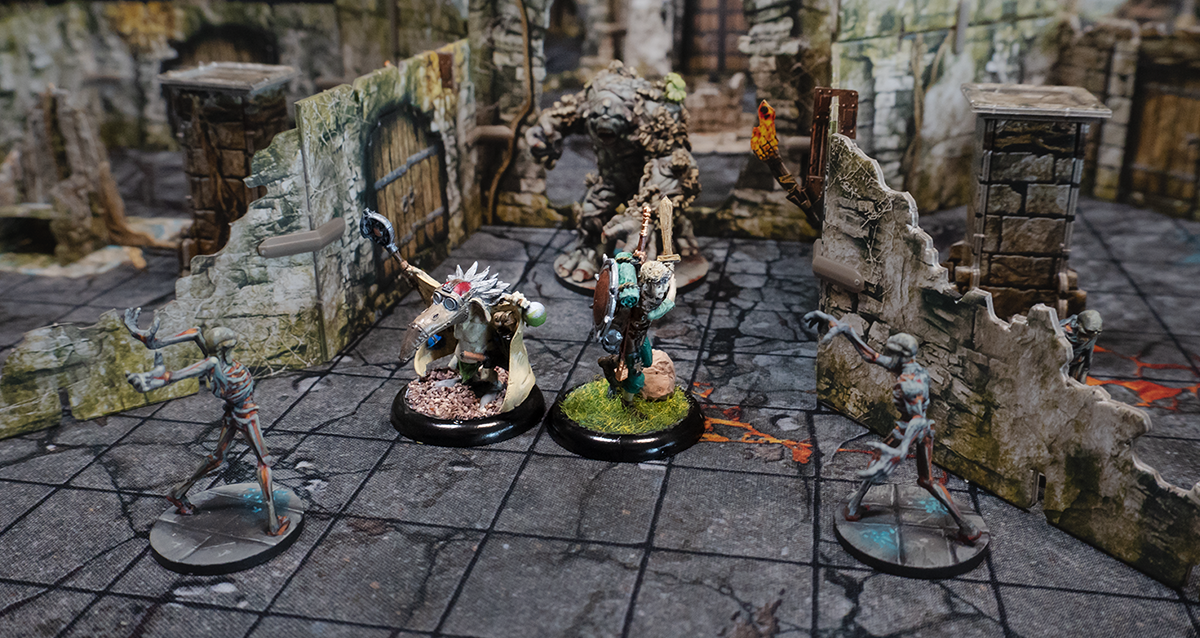
From Shelf to Table: Mixing and Matching Miniatures
They say variety is the spice of life, so why shouldn’t that apply to our games as well?
In this blog, we’re diving into the idea of swapping in characters and miniatures from other game systems. Not just for the sake of changing how your game looks on the table (though that’s a big part of the fun), but also to refresh the experience, and maybe even give your friends a new reason to come over for game night. This idea of course applies to plenty of game systems, but for the sake of familiarity, we’ve used going to use references to the Maladum and Core Space game systems. As well as using terrain from both games as examples for this article, whilst still making an effort to keep it as generic as possible.
Why Swap Minis?
Just switching out the characters on the table can make the whole experience feel different. It creates a buzz; something new to see and play with, but without the rigmarole of needing to learn new rules.
That opens up a world of possibilities, whether it’s simply using more visually appealing models, picking an adventuring party you’ve always wanted to see together, or finding a crossover that pulls in friends who’ve been reluctant to join. And let’s be honest, who among us doesn’t love encouraging our mates into trying a new game?
If you’re looking for reasons to bring in miniatures from other systems, here are four of the biggest:
1. Theme, Aesthetics, and Flavour
Sometimes, you just want your game to feel different without learning anything new. Swapping in miniatures is a simple way to inject fresh energy into familiar mechanics. Maybe you’re feeling a Middle Eastern vibe for Maladum, or want to explore Core Space through a Star Wars lens. A shift in visual style can completely change how a session feels, and help you tell new stories with the same rules.
2. The Shelf of Forgotten Minis
We’ve all got them. Beautiful minis we spent ages painting just gathering dust. Maybe the game’s out of print or your local group moved on. Swapping them into another system gives them purpose again.
3. Winning Over a Friend
You want to get your friend into Core Space, but they’re just not biting. Maybe they’re more into Aliens than cyberpunk. No problem, reframe the game. Swap in Colonial Marines vs Xenomorphs, or turn the Purge into Stormtroopers and the Traders into Rebels. A familiar setting can be the hook that turns “maybe” into “when are we playing again?”
4. Playing With Kids
If your kids are into Minecraft, dinosaurs, or LEGO knights, swap those into your game. Accuracy doesn’t matter—they just want to play with the things they know and love. It’s a great way to turn “Dad’s game” into “our game”.
Storytelling Potential
There’s a lot of potential here for storytelling, not just with new characters on the table, but in how people engage with the game. Swapping in familiar fictional characters can make roleplaying feel more natural for people who don’t usually do it.
Want to see your old D&D party survive in the ruins of Maladum? Now you can. Or use the minis to ease new players into the idea of roleplay, give them a character they already know, and watch them bring it to life.
And if you’re the sneaky educational type, this is also a fun way to drop in historical figures without it feeling like homework. (We’ll get to those further down.)
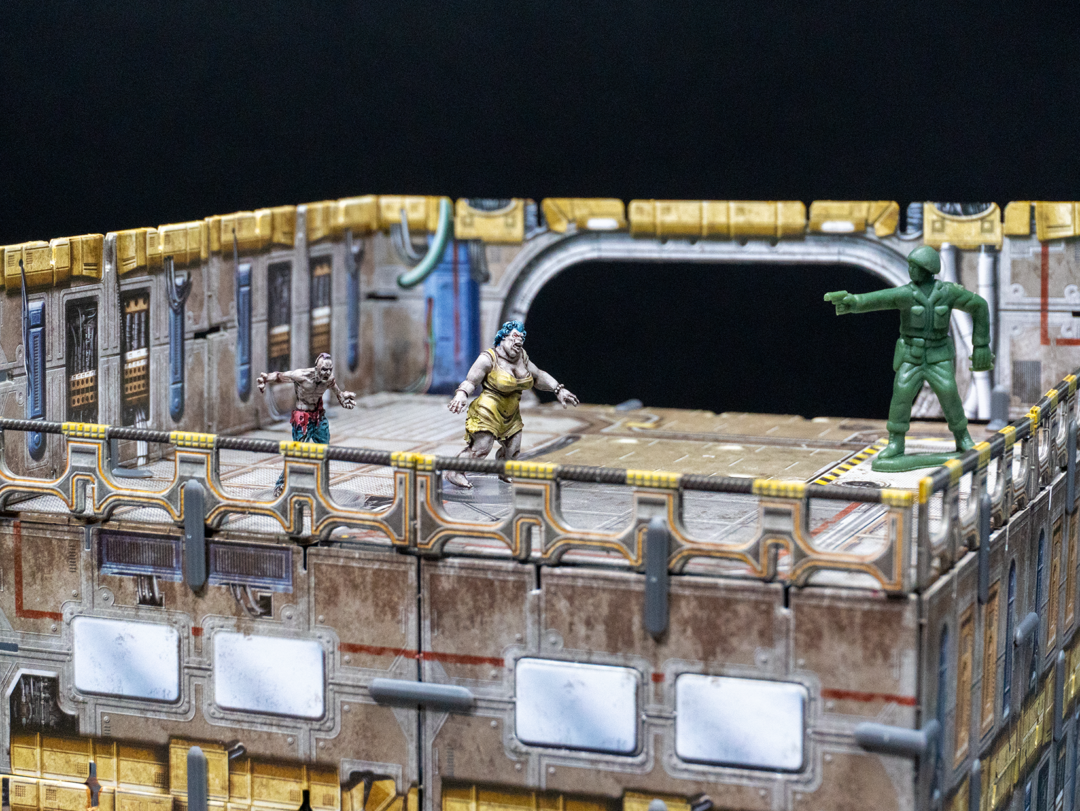
Guidelines on What Works
Stick to similar scale if you want things to feel immersive. Our terrain, for example, works with 28–35mm minis, which gives you loads of flexibility. You can replace heroes, NPCs, enemies within this scale and it should look just at home all on the same board.
Avoid obvious clashes unless you’re doing it for the laugh. A Conan-style barbarian fighting Stormtroopers might work for some groups, but it’ll break the mood for others.
Also: watch the size. A toy soldier too tall for a Zombicide board suddenly becomes a lot less fun. We’ve done it, and it can really throw the visuals off.
Themes and Hooks
If you’re not sure how to sell the idea to your group, tailor the miniatures to their interests.
Got a Star Wars fan at the table? Drop your Legion minis into Core Space.
Big into Lord of the Rings? Slot some fantasy heroes into Maladum. Someone obsessed with Jurassic Park? Use toy dinosaurs. Got younger players? Bring out the LEGO figures. If your mate’s into Pixar, maybe it’s time for a Toy Story-inspired dungeon crawl.
And yes, if Granny’s got a collection of thimbles stick some googly eyes on them, we’d absolutely like to see how they hold up against a revenant horde.
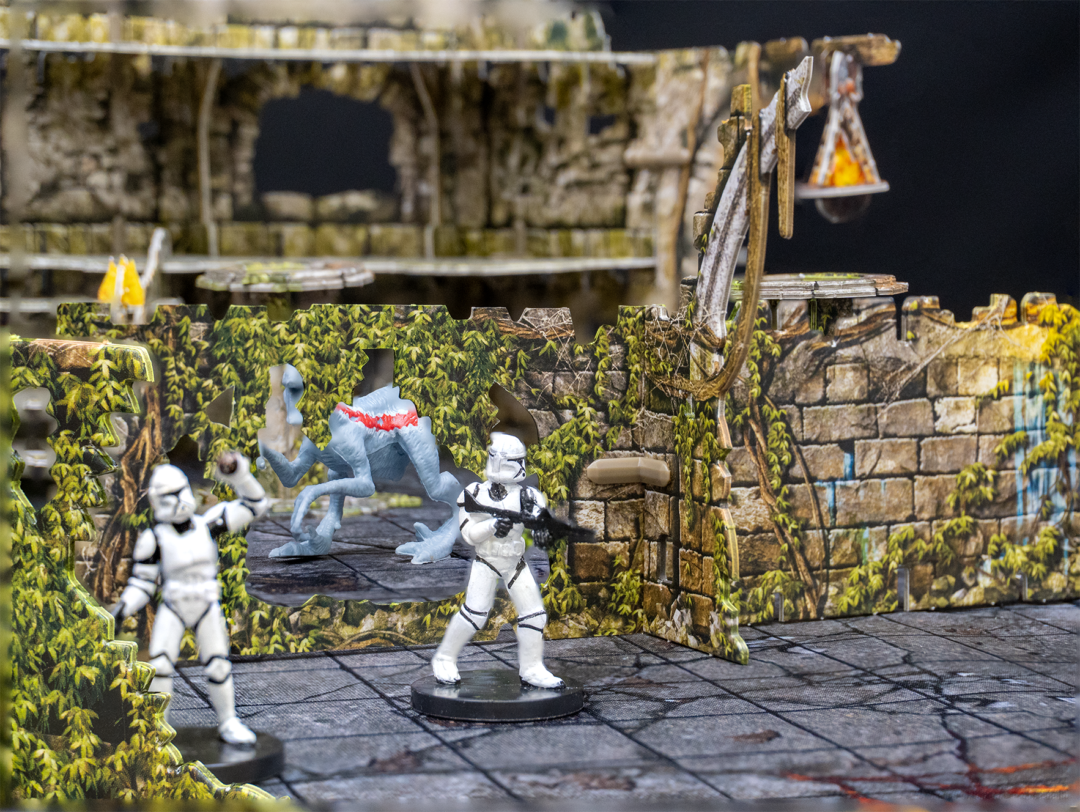
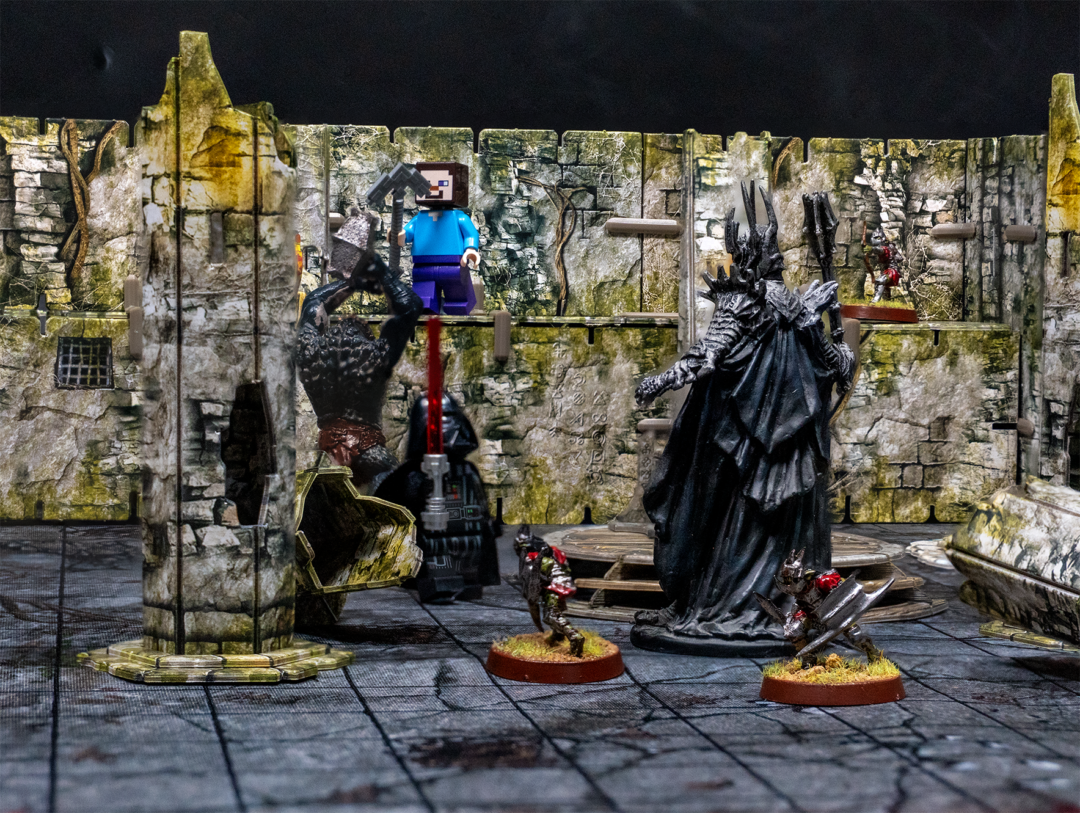
Practical Tips
Add colour. When you’re in the throes of a space battle or clashing swords in the middle of a dungeon, it’s important to keep line of sight on who’s who. Adding coloured bases or tokens can really help with clarity. Also, keep in mind storage and setup. Especially if you’re mixing minis from different boxes or systems, you don’t want friends getting home and realising they’re 3 Space Marines short of an army.
Use what you already have! There is no need to spend money. The whole point is making use of what’s already in yours and your friends’ collections. Remember the shelf of forgotten minis!
Games That Love A Mini Makeover
One of the best things about miniature swapping is just how many games it works with. Whether you’re looking to tell new stories, inject a fresh theme, or just make better use of the models you’ve already got, here are some standout systems that really benefit from a bit of creative cross-play.
Sci-Fi Swaps
Core Space → Maladum
Maladum is set long after the fall of galactic civilisation in Core Space, so swapping in your Traders makes sense. They become scavengers in a world where tech has faded into myth. It’s a natural shift and adds weight to your campaign if you’re connecting the two timelines.
Maladum → Core Space
What happens when a barbarian Grogmar wakes up in a broken galaxy?
That Maladaar might be mistaken for a rogue AI.
That paladin is still fighting, just with a plasma pistol instead of a longsword. Flip the setting and reimagine your fantasy heroes in a sci-fi future… or past in this case. You can even pick up many of the Wandering Beasts and drop them straight into Core Space with only a few changes. If that sounds fun, we explained how to do it in this article.
Star Wars Legion → Core Space
Turn the Purge into Stormtroopers, Traders into Rebels, and write your own missions. Canon’s out the window, this time, you decide who shoots first.
Trench Crusade / 40K → Core Space
Want things more grimdark? Use gritty models from Trench Crusade or Warhammer 40K. Suddenly, every rescue mission feels more desperate. Every ambush more brutal.
Fantasy Swaps
Moonstone → Maladum
Want to lighten the tone? Moonstone’s strange, charming miniatures bring a dark fairy tale vibe to Maladum. It’s ideal for groups who want something a bit more whimsical or surreal.
D&D Characters → Maladum, Frostgrave, or even Zombicide
Bring your RPG characters into a new system for one more story. It’s great for bridging players from roleplay into skirmish games, or giving that bard a proper send-off.
Age of Sigmar / Warhammer Fantasy → Frostgrave or Other Skirmish Games
Old minis gathering dust? Frostgrave is a brilliant sandbox for giving them new purpose. Build a warband from any faction, mix and match, and just get them back on the table.
Children’s Toys → Any Light Adventure Game
Got LEGO figures, Minecraft minis, or plastic knights lying around? Use them.
Kids don’t care about matching style, they care about being part of the story. Swapping in toys they love is a great way to get them involved.
More Games That Work
This is by no means a complete list. Mini swapping works in a ton of systems:
- Zombicide (all versions)
- Frostgrave & Stargrave
- Core Space / Maladum
- Rangers of Shadow Deep
- Five Parsecs from Home / Five Leagues from the Borderlands
- Warcry / Kill Team (especially for homebrew)
If it’s a skirmish game, dungeon crawler, or wargame with models, there’s a good chance it’ll work.
And don’t forget, you can take things the other way too. Drop Maladum minis into your D&D campaign. Use Core Space figures for a homebrew Star Wars mission. There’s a great article on adapting terrain and minis for RPGs here: Dungeon Terrain for Dungeon Masters and Game Masters
Not forgetting the two other big categories we mentioned earlier that have miniatures available for them; Fictional and Historical Characters.
Fictional Characters to Inspire Your Adventuring Crew
Swapping in well-known fictional characters is a great way to get people invested fast. Players already know how these characters think and act, so stepping into their shoes feels easy, even for those who don’t normally roleplay.
Here are a few familiar faces that slot into games like Maladum or Core Space surprisingly well:
- Inigo Montoya (The Princess Bride)
“You killed my father, prepare to die.” A master swordsman on a revenge quest with a surprisingly noble heart. Perfect as a Sellsword or an Assassin with a tragic backstory and a flair for the dramatic. - Eowyn (The Lord of the Rings)
Not quite as spotlighted as Aragorn or Gandalf, but iconic in her own right. Eowyn’s a noblewoman-turned-warrior who defies expectation and takes down a literal Witch-King. Ideal inspiration for a shieldmaiden archetype. - Hellboy (From… Hellboy)
Big, red, stone hand, loves cats. A gruff but loveable demon who punches monsters for a living. Drop him into any dungeon as a Barbarian or space station as an Outlander with unexpected depth and a smart mouth. - San (Princess Mononoke)
A fierce, wolf-raised warrior who protects the forest with primal rage and heartfelt conviction. She makes an excellent wild-themed rogue with strong moral roots and a wild edge. - Jack Sparrow (Pirates of the Caribbean)
He might look like he’s bumbling his way through life, but he’s always got a plan (sort of). Great for a chaotic Mercenary in Core Space or a Maestro in Maladum who survives on wit, luck, and rum-fuelled instinct. - Yennefer of Vengerberg (The Witcher)
Powerful, clever, and utterly uncompromising. Yennefer isn’t just a spellcaster, she’s a political player with complex motives. Excellent inspiration for a Warlock in Maladum or a Core Space Augmented who knows their worth. - Tyrion Lannister (Game of Thrones)
Not a warrior in the traditional sense, but deadly in his own way. Tyrion is all about strategy, manipulation, and sharp dialogue. Use him as a base for a Strategist, Operations Class, with a reluctant leader persona. - Furiosa (Mad Max: Fury Road)
War-rig driver, rebel leader, and all-round badass. Furiosa is a brilliant example of a fighter or tactician style character who leads with grit and purpose.
Historical Figures That Make Great Adventurers
If fictional heroes don’t cut it for you, real history has no shortage of inspiration. Swapping in historical figures is also a subtle way to introduce new ideas, cultures, or stories into your game.
- Miyamoto Musashi
A masterless samurai and author of The Book of Five Rings. Musashi fought over 60 duels and never lost. He’s the archetypal lone swordsman. - Tomoe Gozen
A legendary samurai from 12th-century Japan, Tomoe was known for her intelligence, and deadly skill with a bow and sword. She’d be right at home charging into any battle, especially if you’re after a character that breaks the mould of typical warrior tropes. - Boudica
The warrior queen of the Iceni tribe who led an uprising against Roman rule in Britain. Fierce, driven, and iconic, she brings serious “don’t mess with me” energy to any tabletop. - Nikola Tesla
The eccentric inventor and futurist whose real-life work borders on science fiction. Tesla makes a brilliant mad scientist, engineer, or arcane tinkerer. Pop him into a dungeon with some firepower or into your Core Space crew as an augmented and you’ve got instant flavour. - Artemisia I of Caria
A naval commander and advisor to Xerxes during the Greco-Persian Wars, Artemisia led warships into battle and held her own among powerful male generals. She’s a fantastic stand-in for a sea-faring tactician, pirate queen, or cunning political operator with a fleet at her back. - Joan of Arc
A teenage peasant girl who claimed divine guidance, led armies, and defied societal expectations. Joan of Arc brings conviction, courage, and dramatic flair to the table. - Leonardo da Vinci
Painter, engineer, inventor, anatomist—there’s not much he didn’t do. As a polymath character, da Vinci would suit any class that combines brains and creativity. A great wildcard for puzzle-solving or weird tech builds. - Grace O’Malley
Pirate queen of Ireland in the 16th century. She commanded ships, defied English rule, and had a showdown with Queen Elizabeth I. The perfect savvy rogue if your game needs a bit of salt and swagger.
These aren’t just cool characters, they’re a way to introduce story hooks, personal rivalries, and unexpected alliances into your sessions.
Swapping minis isn’t just a fun side project. It’s a way to keep games fresh, connect different parts of your collection, and make things feel personal again. Whether you’re reviving old models, drawing in new players, or just adding a bit of chaos to the table, mini swapping is a low-effort, high-reward tweak to your game nights.
Have you tried it?
We’d love to see what you’ve done, whether it’s beautifully thought-out crossovers or total chaos in plastic form.
Tag us in your setups using @battlesystems or the hashtags:
#corespace #maladum #battlesystemsterrain
Don’t Forget!
Both Core Space and Maladum have free character creators, so you can build your custom crews or parties to match whatever minis you’re using. Below we have shown a couple examples that the team have used for their personal games.
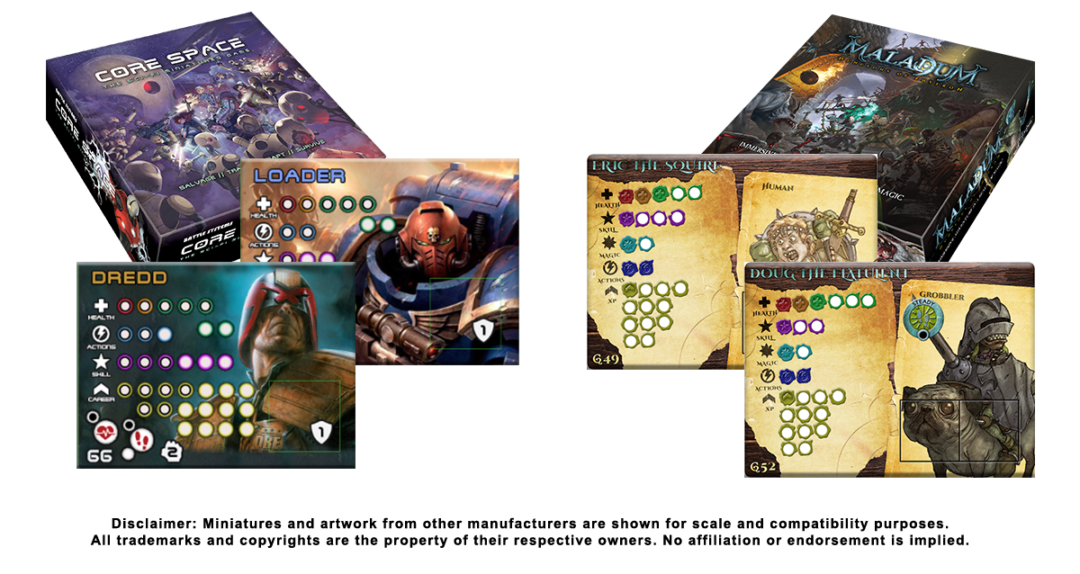
Need more inspiration? Don’t forget there is a who community of Core Space and Maladum fans out there. Jump in the discord and join the community!


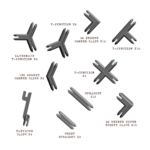
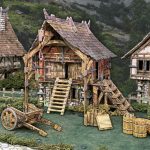
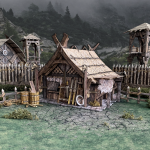
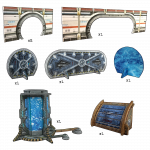
Start the conversation